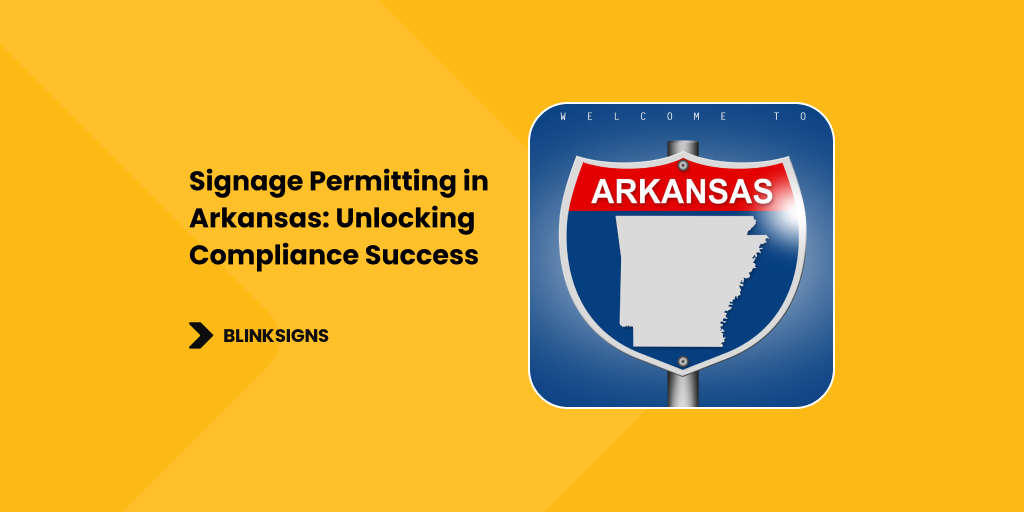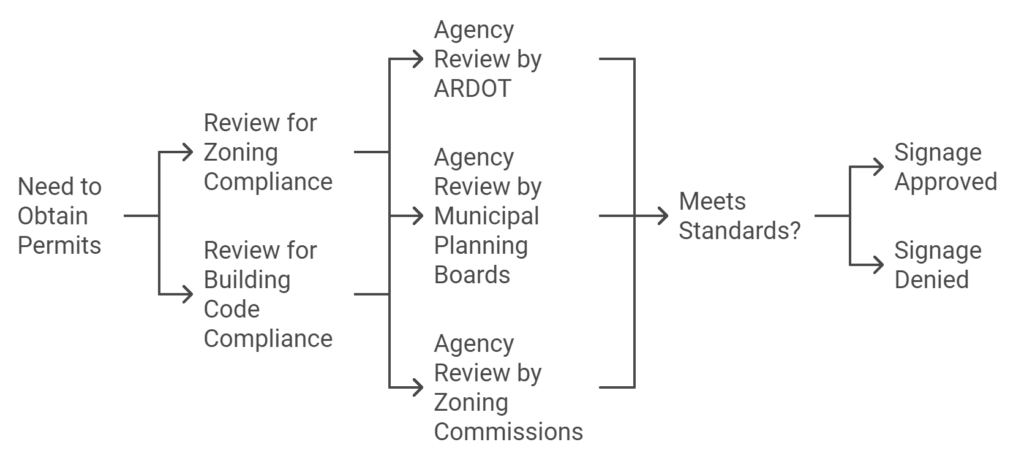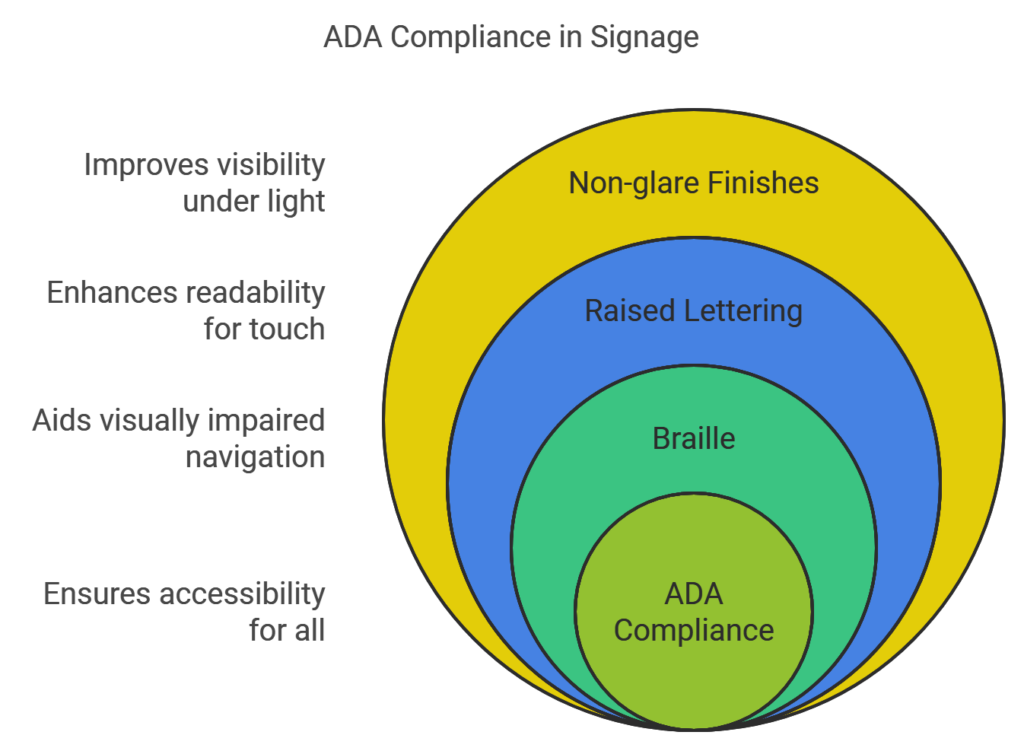
Signage Permitting in Arkansas: Unlocking Compliance Success
Signage permitting in Arkansas serves as a vital tool for businesses, combining visibility, branding, and functionality to capture the attention of potential customers. In urban centers like Little Rock and Fayetteville, signage shapes consumer behavior by drawing attention to storefronts and advertisements. Simultaneously, signs in quieter rural areas such as Benton County contribute to the community’s unique character while ensuring businesses remain competitive. The strategic placement and thoughtful design of signs are paramount to achieving these goals effectively.
Arkansas offers a diverse landscape that includes bustling commercial districts, historic zones, and scenic byways, each requiring careful consideration for signage placement and compliance. Businesses must meet aesthetic expectations while adhering to local, county, and state guidelines, ensuring their signage meets community values and safety requirements. Signs installed in locations near highways or historic preservation zones must also comply with additional standards to safeguard environmental and historical integrity.

Little Rock Arkansas
Why Sign Permits Are Necessary
Sign permits are critical in ensuring that signage installations are safe, compliant, and visually harmonious with their surroundings. Regulatory oversight exists to prevent hazards such as obstructed visibility for motorists or pedestrians, structural instability, or excessive distractions caused by illuminated or animated signs. Compliance with sign permitting processes ensures businesses contribute positively to the community while avoiding penalties, fines, or removal orders.
Obtaining permits validates that signage conforms to zoning ordinances and building codes regulating size, height, materials, and lighting. Agencies like the Arkansas Department of Transportation (ARDOT), municipal planning boards, and zoning commissions oversee these processes in Arkansas, ensuring public safety and community standards are upheld.

Signage Permitting process in Arkansas
Key Regulatory Bodies in Arkansas
Multiple regulatory bodies oversee signage permitting processes across the state. The Arkansas Department of Transportation (ARDOT) governs signage along highways and ensures compliance with the Highway Beautification Act. Local municipal zoning boards, including those in cities like Hot Springs and Bentonville, review applications to ensure compatibility with zoning regulations. In historic districts like Eureka Springs, historic preservation agencies play an essential role in safeguarding the aesthetic integrity of signage installations. City and county planning departments collaborate to enforce compliance across commercial, residential, and industrial zones.
Understanding Sign Permits in Arkansas
Requirements for obtaining a sign permit in Arkansas include submitting detailed documentation, such as site plans, elevation drawings, and material specifications, which provide insight into the intended location and design.
Primary Regulatory Authorities
Several bodies distribute regulatory oversight, each contributing to maintaining safety and consistency in Arkansas’s signage practices. The Arkansas Department of Transportation (ARDOT) enforces regulations for signage installed along state highways and scenic byways. Municipal zoning boards focus on sign placements within city limits, while county authorities address installations in rural areas. The Arkansas Historic Preservation Program oversees signage compliance in heritage zones, ensuring designs align with the historical and cultural context.
Legal Basis for Regulation
State and local statutes establish the legal framework for signage regulation in Arkansas. The Arkansas Municipal Code defines the zoning requirements and size limitations applicable to different districts. ARDOT enforces the Highway Beautification Act, which restricts signage near scenic byways to preserve natural beauty. Local ordinances dictate additional signage materials, lighting, and placement standards, ensuring alignment with safety and aesthetic goals.
Types of Signage and Their Compliance Standards
This table provides a detailed overview of signage types and their compliance standards, along with prohibited signs, to ensure businesses in Arkansas maintain regulatory compliance while achieving effective branding and visibility.
| Signage Type | Definition & Purpose | Compliance Standards | Prohibited Signs in Arkansas |
| Freestanding Signs | Signs installed independently of buildings, such as pole signs and monument signs. | Height and setback restrictions vary by zoning. Must meet wind load and structural safety requirements. | Flashing freestanding signs or those exceeding maximum height limits in residential or scenic zones are prohibited. |
| Wall Signs | Signs attached directly to building walls used for branding or directional purposes. | Maximum area percentage is relative to wall size. Must not extend beyond property lines or obstruct windows. | Wall signs that obstruct natural light or violate building codes are restricted. |
| Monument Signs | Ground-level signs are often used for business parks, schools, or entrances to residential developments. | Maximum height, setback requirements, and illumination controls by zoning laws. | Monument signs using prohibited materials, such as non-durable plastics, or those in protected areas are prohibited. |
| Digital Signs and EMCs | Electronic Message Centers and LED displays for dynamic content and enhanced visibility. | Brightness limits, animation frequency, and operating hours must comply with local ordinances. | Excessively bright digital signs or those with unregulated animation in residential or environmentally sensitive zones are prohibited. |
| Temporary Signs | Short-term signs, such as banners, A-frames, and construction signs, used for events or promotions. | Duration limits, placement restrictions, and size caps enforced. | Temporary signs left beyond allowed periods or placed in public right-of-ways without permits are prohibited. |
| Billboards and Off-Premise Signs | Large signs used for advertising distant or unrelated businesses. | Spacing and height restrictions apply, especially along highways and scenic byways. | Billboards exceeding IDOT height limits or those violating Highway Beautification Act guidelines are banned. |
| Directional and Wayfinding Signs | Signs designed to assist with navigation within complexes or campuses. | Must meet height and size restrictions, especially in residential or commercial districts. | Wayfinding signs that obstruct traffic signals or public infrastructure are prohibited. |
| Construction Signs | Temporary signs indicating ongoing development or construction activities. | Limited to construction timelines and must meet specific size and placement requirements. | Construction signs exceeding size restrictions or placed outside construction zones are prohibited. |
| Awning and Canopy Signs | Signs integrated into awnings or canopies to display business names or logos. | Must adhere to size and setback regulations; illumination must meet light pollution standards. | Overly large or excessively illuminated awning signs that encroach on public spaces are restricted. |
| Window Signs | Signs placed inside or on windows to advertise promotions or branding. | Maximum coverage limits, usually 25-50% of the window area. | Window signs that obstruct visibility or fail to meet size and material standards are restricted. |
| Prohibited Signs in Arkansas | Signs that are not compliant with local, state, or federal regulations. | Include unregulated flashing signs, unauthorized digital billboards, and any signs with offensive content. | Signs with obscene content, dangerous projections, or unauthorized placement near public infrastructure are strictly prohibited. |
Step-by-Step Guide to the Sign Permitting Process in Arkansas
-
Application Preparation and Submission
Preparation for a sign permit application involves gathering all required documentation, including detailed site plans, elevation drawings, and specifications for lighting and materials. The relevant zoning board or planning department receives and evaluates the applications for compliance with local codes.
-
Plan Review and Approval
Plans undergo a thorough review to ensure adherence to zoning ordinances, safety guidelines, and design standards. The approval timeline depends on the project’s complexity, with larger installations requiring more extensive scrutiny. Collaboration with authorities, including ARDOT, may be necessary for signage located near highways.
-
Inspections and Compliance Checks
Post-approval inspections focus on structural integrity, electrical compliance, and alignment with approved plans. These inspections ensure the signage remains safe and meets aesthetic and environmental standards.
-
Permit Issuance and Installation
Businesses can proceed with installation after successful inspections and the issuance of permits. Adhering to guidelines during the installation phase is essential to avoid penalties and maintain compliance.
City and County-Specific Requirements for Signage
Each city and county in Arkansas enforces specific signage regulations tailored to local priorities and community standards. Businesses operating in different regions must carefully navigate these rules to ensure compliance and maximize the effectiveness of their signage.
This table clarifies compliance and helps businesses understand specific requirements across Arkansas cities.
| City/County | Regulatory Authority | Key Requirements | Prohibited Signage | Additional Notes |
| Little Rock | Little Rock Planning & Development | There are height limits of 30 feet for freestanding signs in commercial areas; permits are required for illuminated and wall signs. | Flashing signs and excessively bright digital displays near residential areas. | Historic districts require design approvals from the Historic Commission. |
| Fayetteville | Fayetteville Building Safety Department | Maximum 20 feet for pole signs; strict guidelines for electronic message centers (EMCs). | Signs obstruct traffic views, and banners are over 60 days without renewal. | Environmental zones enforce unique material standards. |
| Fort Smith | Fort Smith Zoning Department | Pylon signs are limited to 25 feet in industrial zones; size is restricted to 50 square feet in residential zones. | Roof-mounted signs and signs with animated or flashing lights. | Scenic byways near Fort Smith enforce stricter compliance for aesthetic purposes. |
| Springdale | Springdale Code Enforcement Office | Wall signs must not exceed 15% of the building facade; freestanding signs must meet setback requirements. | Portable signs and signs blocking pedestrian walkways. | Permits are mandatory for all illuminated signs, with yearly inspection requirements. |
| Jonesboro | Jonesboro Planning Commission | Digital billboards are limited to 200 nits after sunset; temporary signs require 30-day renewals. | Billboards exceeding 400 square feet or with rotating content. | Temporary construction signage requires additional zoning approval. |
| Conway | Conway Zoning and Planning | Monument signs cannot exceed 6 feet in height in residential zones; businesses are limited to one freestanding sign. | Signs encroaching on public property or right of way. | Additional academic zoning standards govern University district signage. |
| Bentonville | Bentonville Community Development Office | Illuminated signs must not exceed 400 nits; height restrictions apply for all signs near historical zones. | Neon signs and signs overhanging public sidewalks without approval. | Signage near Crystal Bridges Museum is subject to additional aesthetic guidelines. |
| Rogers | Rogers Building and Code Enforcement | Pylon signs are limited to 20 feet in height, and wall signs must not cover more than 10% of the facade area. | Moving or animated signs; signs obstructing public utilities. | Commercial districts allow specific exceptions for marquee-style signage. |
| Hot Springs | Hot Springs City Planning Office | Freestanding signs are limited to 15 feet in height in downtown zones; wall-mounted signs require material compliance. | Signs with reflective materials and flashing LED signs within 500 feet of residential zones. | Signage near the National Park requires federal review for design and compliance. |
| Texarkana | Texarkana Urban Planning Department | Setback of 5 feet is required for all freestanding signs; banners are limited to 30-day display periods. | Temporary signs without permits and digital billboards in environmentally sensitive zones. | Signage across the state border must comply with dual regulations from Arkansas and Texas authorities. |
| Pine Bluff | Pine Bluff Building Codes Division | Maximum height of 10 feet for monument signs in residential areas; permits required for all EMCs. | Off-premise signs within 200 feet of a residential zone or park. | School zones have additional rules for the visibility and placement of directional signs. |
| North Little Rock | North Little Rock Planning Department | Wall signs must adhere to a 15% facade area limit, and freestanding signs are restricted to 20 feet in height in business zones. | Billboards and digital signs near scenic byways or residential zones. | Prohibited areas include landmarks and historic buildings without explicit approval. |
| Bryant | Bryant Zoning and Land Use Office | Temporary signs must not exceed 20 square feet; height restrictions apply for freestanding signs near residential zones. | Animated signs and those projecting over public sidewalks or rights-of-way. | Regular inspections are mandated for illuminated signs to ensure safety compliance. |
Key Takeaways:
- Regulatory Variation: Each city enforces unique height, size, and material standards based on zoning categories.
- Prohibited Signage: Flashing, obstructive, or excessively bright signs are commonly restricted across Arkansas cities.
- Special Zones: Areas like historical districts, scenic byways, and environmentally sensitive regions often impose additional aesthetic and material requirements.
ADA and Accessibility Standards for Signage
Adherence to the Americans with Disabilities Act (ADA) is essential for all signage in Arkansas. This ensures accessibility for all individuals, including those with visual and physical impairments. Businesses are required to incorporate Braille, raised lettering, and non-glare finishes into their signage designs. These elements improve readability for visually impaired individuals and are mandatory in public spaces.

ADA compliance in Signage for Arkansas
Visibility and placement standards are also critical components of ADA compliance. All users, including those in wheelchairs, must easily see and access signs positioned at specific heights. Clear, high-contrast colors and legible fonts enhance visibility, ensuring compliance with ADA guidelines.
Periodic inspections conducted by local zoning boards and accessibility agencies verify that signage complies with these regulations. Non-compliance can lead to penalties, including fines or mandated signage redesigns.
BlinkSigns specializes in designing ADA-compliant signage that prioritizes accessibility while maintaining aesthetic appeal.
Costs and Fees Associated with Signage Permitting
The cost of signage permitting in Arkansas varies significantly based on location, sign type, and project complexity. Temporary signs, such as banners and A-frames, typically incur lower fees, while digital signs and illuminated signage involve higher costs due to additional electrical permits and environmental compliance requirements.
Permit fees also vary by municipality. In cities like Little Rock and Fayetteville, businesses may face higher costs in downtown or high-traffic areas. Budgeting must also account for additional expenses like inspection fees, renewal charges, and bond requirements. Signs requiring variances, such as those exceeding standard height or size limits, may incur additional processing fees.
BlinkSigns offers businesses transparent cost assessments and budget-friendly strategies. It guarantees the accounting of all permitting fees and associated expenses. By helping clients navigate local fee structures, BlinkSigns streamlines the permitting process and minimizes financial surprises.
Environmental and Aesthetic Standards for Signage

State Capital Building Arkansas
Arkansas places significant emphasis on environmental conservation and aesthetic standards for signage. Regulations aim to balance the visibility and effectiveness of signage with the preservation of natural landscapes and community character.
In areas like Flagstaff and Sedona, which protect natural beauty and stargazing opportunities, illuminated signs must comply with dark sky ordinances to reduce light pollution. We encourage using LED lighting and other energy-efficient solutions to minimize environmental impact and reduce operational costs.
Recyclable materials and sustainable design methods further promote eco-friendly practices. For instance, due to their durability and environmental benefits, businesses prefer signs made from aluminum, polycarbonate, or reclaimed wood. Additionally, businesses near scenic byways or protected zones must follow stringent aesthetic guidelines, ensuring signage blends harmoniously with its surroundings.
BlinkSigns assists businesses in adopting sustainable practices and eco-friendly materials, delivering signage that meets environmental regulations and design goals.
Variance and Appeal Processes for Sign Permits
Sometimes, businesses may require signage that exceeds standard height, size, or setback limitations. In these situations, applying for a variance is essential. Variances allow businesses to request exceptions to local zoning ordinances, provided they can justify the need based on specific circumstances, such as location constraints or branding requirements.
The variance process involves submitting detailed documentation to the local zoning board or planning commission, including site plans, architectural renderings, and justification statements. We review these submissions to ascertain if the proposed signage conforms to safety and community standards.
Businesses can appeal a denied variance request. The appeal process requires presenting revised plans or additional supporting materials to demonstrate compliance. Engaging with professionals such as BlinkSigns guarantees the professional preparation and effective argumentation of variance and appeal submissions, thereby enhancing the chances of approval.
Maintenance and Renewal of Signage Permits
Maintaining signage compliance in Arkansas is an ongoing responsibility. Regular inspections and routine maintenance are necessary to ensure signs remain safe, functional, and visually appealing. Businesses must address wear and tear, particularly for illuminated and outdoor signs exposed to harsh weather conditions. We must routinely inspect and repair components such as sign cabinets, lighting systems, and support structures as needed.
Permit renewals are required for temporary signs and some permanent installations, with renewal timelines varying by municipality. Renewal applications often require updated documentation to confirm continued compliance with zoning ordinances and building codes.
Detailed recordkeeping simplifies the renewal process and ensures businesses comply with local and state regulations. BlinkSigns offers comprehensive maintenance and renewal support, helping businesses extend the lifespan of their signage investments while avoiding penalties or fines.
Future Trends and Innovations in Arkansas Signage
The signage industry in Arkansas is evolving rapidly, with new trends and innovations reshaping how businesses communicate with their audiences. Digital signage is becoming increasingly popular, offering real-time content updates and dynamic visual displays that effectively engage customers.
Sustainability is another emerging trend, with businesses adopting solar-powered lighting, recyclable materials, and energy-efficient designs. These practices align with environmental regulations while reducing operational costs.
Integration with local culture is also gaining traction as businesses incorporate regional motifs, natural textures, and cultural references into their signage designs. These approaches enhance brand identity and create a stronger connection with the local community.
BlinkSigns remains at the forefront of these trends, providing businesses with innovative and sustainable signage solutions that deliver lasting impact.
FAQs
What is the process for obtaining a signage permit in Arkansas?
The process involves submitting a detailed application to local zoning and planning authorities. Required documents include site plans, elevation drawings, and material details. BlinkSigns simplifies this procedure for you and guarantees compliance with all compliance standards.
Are digital signs allowed in residential areas in Arkansas?
Residential areas generally restrict digital signs to minimize light pollution and disturbances. BlinkSigns helps you design and place digital signage that adheres to Arkansas zoning laws.
What are the common reasons for signage permit rejections in Arkansas?
Permit rejections often occur due to incomplete applications, non-compliance with size or height limits, or improper placement. BlinkSigns provides expert guidance to avoid such pitfalls and secure approvals efficiently.
How does Arkansas regulate temporary signage?
Temporary signage, like banners or construction signs, is subject to duration limits and size restrictions. BlinkSigns ensures your temporary signage complies with local ordinances, avoiding fines and removal orders.
Which materials are ideal for signage in Arkansas’s weather conditions?
Weather-resistant materials like aluminum, polycarbonate, and UV-protected vinyl are ideal for Arkansas’s climate. BlinkSigns offers durable material options to keep your signage looking professional year-round.
Are there specific rules for signage near highways in Arkansas?
Highway signage must comply with spacing, height, and visibility restrictions per the Highway Beautification Act. BlinkSigns specializes in creating compliant highway signage to maximize visibility and impact.
Can businesses file an appeal if the government rejects their application for a signage permit?
Businesses can appeal permit denials through local zoning boards or administrative channels. BlinkSigns assists with documentation and representation during the appeal process to improve your chances of approval.
What are the penalties for non-compliant signage in Arkansas?
Non-compliant signage can result in fines, mandatory removal, or legal action. BlinkSigns ensures your signage meets all local, state, and federal regulations, preventing costly penalties.
Are environmentally friendly signage options available in Arkansas?
Indeed, many Arkansas jurisdictions encourage eco-friendly options like LED lighting and recyclable materials. BlinkSigns offers sustainable signage solutions to align with environmental standards.
How frequently should Arkansas maintain or inspect its signage?
Routine maintenance and periodic inspections are essential, especially for illuminated or freestanding signs. BlinkSigns provides maintenance services to ensure compliance and extend the life of your signage.
Conclusion: Simplifying Signage Permitting in Arkansas
Signage permitting in Arkansas is essential for creating compelling, compliant, and visually appealing business signage. By understanding the requirements and processes outlined in this guide, businesses can confidently navigate the complexities of permitting while maximizing the impact of their signage.
BlinkSigns offers unparalleled signage design, permitting, and installation expertise, ensuring businesses achieve their branding and compliance goals seamlessly. For further inquiries, contact us at Sales@BlinkSigns.com. Today is your day to begin your journey toward impactful and compliant signage in Arkansas.